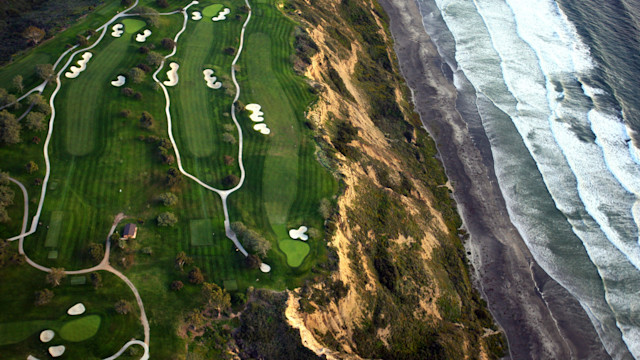History and Evolution
The origins of golf courses trace back to the 15th century in Scotland, with the Old Course at St Andrews often regarded as the "home of golf." The sport's popularity led to the establishment of numerous courses, each reflecting the natural terrain and the design philosophies of their time. Early courses were rudimentary, utilizing the existing landscape with minimal alterations.
In the late 19th and early 20th centuries, golf course architecture emerged as a specialized field. Architects like Alister MacKenzie introduced strategic designs that integrated natural features and emphasized playability for golfers of all skill levels. MacKenzie's work, including the design of Augusta National Golf Club, exemplifies this approach. His philosophy emphasized strategic challenges suitable for players of all abilities, aesthetic beauty, minimal disruption to play, and health benefits through engaging outdoor activity. Source Name
Design and Architecture
Golf course design involves a blend of art and science, considering factors such as topography, climate, and intended difficulty. Courses typically consist of 18 holes, each with a teeing area, fairway, rough, and green, accompanied by hazards like bunkers and water features. The layout aims to provide a variety of challenges and strategic options for players.
Notable architects have significantly influenced golf course design:
- –Alister MacKenzie: Known for naturalistic designs that blend seamlessly with the environment.
- –Robert Trent Jones Sr.: Advocated the "hard par, easy bogey" philosophy, creating courses that challenge professional golfers while remaining accessible to amateurs. His design of the Dunes Golf & Beach Club in 1949 exemplifies this approach.
Source Name
- –Dick Wilson: Designed or renovated at least sixty courses during his career, including the TPC Blue Monster at Doral and Bay Hill.
Source Name
Maintenance and Sustainability
Maintaining a golf course requires meticulous attention to turf health, irrigation, pest control, and environmental stewardship. Modern practices emphasize sustainability, incorporating technologies and methods to reduce environmental impact:
- –Water Conservation: Implementing efficient irrigation systems and using reclaimed water to minimize consumption.
Source Name
- –Integrated Pest Management (IPM): Combining cultural, mechanical, and biological methods to control pests, reducing reliance on chemical pesticides.
Source Name
- –Use of Technology: Employing robotic mowers and data analytics to optimize maintenance schedules and resource use.
Source Name
Notable Golf Courses
Several golf courses are renowned for their design, history, and the tournaments they host:
- –Old Course at St Andrews: Established in the 15th century, it is considered the "home of golf" and has hosted numerous Open Championships.
Source Name
- –Shinnecock Hills Golf Club: Founded in 1891, it is one of the oldest golf clubs in the United States and has hosted multiple U.S. Open Championships.
Source Name
- –Bethpage Black: A public course in New York known for its difficulty and having hosted major tournaments, including the U.S. Open and the Ryder Cup.
Source Name
Modern Developments
Contemporary golf course design and maintenance continue to evolve, focusing on sustainability and community engagement. For instance, Tiger Woods is designing a new par-3 course and learning center in Augusta, Georgia, aiming to make golf more accessible and inclusive. Source Name
Conclusion
Golf courses are integral to the sport of golf, offering diverse challenges and experiences to players. Their design and maintenance reflect a balance between tradition and innovation, with a growing emphasis on environmental responsibility and inclusivity.
